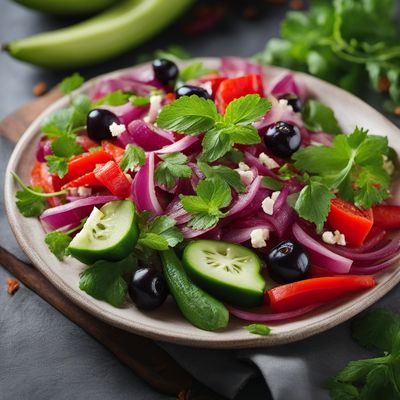
Ingredient
Kiwiberries
The Delightful Miniature Kiwi
Kiwiberries, also known as hardy kiwis or baby kiwis, are small fruits that are about the size of a grape. They have a smooth, edible skin and a vibrant green flesh that is juicy and slightly tart. Unlike their larger counterparts, kiwiberries can be eaten whole, including the skin, making them a convenient and nutritious snack.
Origins and history
Kiwiberries are native to East Asia, particularly China, Japan, and Korea. They have been cultivated for centuries and are highly regarded for their nutritional value and medicinal properties. Kiwiberries were introduced to Europe and North America in the 20th century and have gained popularity as a unique and flavorful fruit.
Nutritional information
Kiwiberries are a rich source of vitamin C, vitamin E, and dietary fiber. They are also low in calories and fat, making them a healthy choice for snacking or incorporating into various recipes.
Allergens
Kiwiberries are not known to be allergenic and are generally well-tolerated by most individuals. However, as with any food, some people may have individual sensitivities or allergies. If you have a known allergy to kiwis, it is advisable to exercise caution when consuming kiwiberries.
How to select
When selecting kiwiberries, look for fruits that are firm, plump, and free from blemishes or wrinkles. The skin should be smooth and vibrant in color. Avoid kiwiberries that are overly soft or have signs of mold or decay. Additionally, choose organic or locally grown kiwiberries whenever possible to support sustainable farming practices.
Storage recommendations
To prolong the freshness of kiwiberries, store them in the refrigerator. Place them in a breathable container or perforated bag to allow for air circulation, which helps prevent moisture buildup and mold growth. Kiwiberries can be stored for up to two weeks when refrigerated.
How to produce
Kiwiberries can be grown in temperate regions with mild climates. They require well-drained soil, ample sunlight, and a trellis or support structure for the vines to climb. With proper care and maintenance, kiwiberries can be successfully grown in home gardens or small-scale farms.
Preparation tips
Kiwiberries can be enjoyed as a healthy snack on their own or incorporated into various dishes. They can be added to fruit salads, smoothies, yogurt bowls, or used as a garnish for desserts. Kiwiberries can also be used in jams, jellies, and baked goods to add a burst of flavor and vibrant color.
Culinary uses
Kiwiberries are commonly used in fresh fruit preparations, desserts, and beverages. They can be used as a topping for cakes and pastries, blended into smoothies or fruit juices, or added to salads for a refreshing twist. Kiwiberries are also popular in Asian cuisines, where they are used in both sweet and savory dishes.
Availability
Kiwiberries are primarily cultivated in East Asia, Europe, and North America. They are commonly available in countries like China, Japan, South Korea, Italy, France, Germany, and the United States.
More ingredients from this category
Recipes using Kiwiberries

Maltese Stocafi with Tomato and Olives
Mediterranean Delight: Maltese Stocafi with a Burst of Flavors

Sicilian-Inspired Vermicelli Delight
Mediterranean Sunshine on Your Plate: Sicilian Vermicelli Delight

Greek-American Style Fish Salad
Mediterranean Delight: Greek-American Style Fish Salad

Veracruz-Style Kaleve with a Twist
Spicy and Tangy Veracruz-Style Kaleve: A Mexican Delight

Collorelle alla Siciliana
Sicilian Delight: Collorelle Pasta with a Burst of Mediterranean Flavors

Andalusian-style Salata
Andalusian Delight: A Refreshing Twist on Salata

Sicilian-style Insalata Russa Pincho
Mediterranean Delight: Sicilian-style Insalata Russa Pincho

